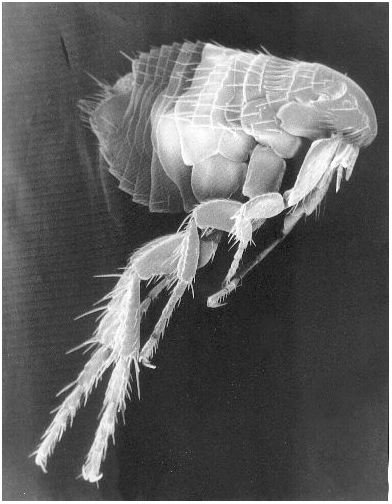"The Flea": A John Donne Poetry Analysis
“The Flea” by John Donne
Your first step in understanding John Donne is to read and reread the poem. I have saved you the trouble of clicking away by providing it for you below:
MARK but this flea, and mark in this,
How little that which thou denies me is ;
It suck’d me first, and now sucks thee,
And in this flea our two bloods mingled be.
Thou know’st that this cannot be said
A sin, nor shame, nor loss of maidenhead ;
Yet this enjoys before it woo,
And pamper’d swells with one blood made of two ;
And this, alas ! is more than we would do.
O stay, three lives in one flea spare,
Where we almost, yea, more than married are.
This flea is you and I, and this
Our marriage bed, and marriage temple is.
Though parents grudge, and you, we’re met,
And cloister’d in these living walls of jet.
Though use make you apt to kill me,
Let not to that self-murder added be,
And sacrilege, three sins in killing three.
Cruel and sudden, hast thou since
Purpled thy nail in blood of innocence?
Wherein could this flea guilty be,
Except in that drop which it suck’d from thee?
Yet thou triumph’st, and say’st that thou
Find’st not thyself nor me the weaker now.
‘Tis true ; then learn how false fears be ;
Just so much honour, when thou yield’st to me,
Will waste, as this flea’s death took life from thee.
Summary
**
Stanza 1: The poem’s speaker, in an effort to woo a lady and convince her to sleep with him, discusses how a flea has bitten them both and mingled their blood, a euphemism for intercourse. The speaker claims there is no “sin; nor shame; nor loss of maidenhead.”
Stanza 2: The speaker, once again, attempts to persuade the object of his affection by claiming that since their blood has already been mingled in the flea, they might as well, therefore, mingle their blood amorously.
Stanza 3: The object of the speaker’s affection has killed the flea, an apparent sign of rejection that the speaker turns to his favor by explaining that the mingling of blood has made neither of them weaker, much in the same way yielding to each other will not make them weaker.
Poetic Devices

Now that you have a general idea of the poem, continue with a look at poetic devices.
- Meter: Each stanza contains alternating lines of iambic tetrameter and iambic pentameter with a closing iambic pentameter couplet.
- Rhyme Scheme: aabbccddd
- Repetition - “mark” and “sucked” is repeated in lines 1 and 3 respectively. Repetition is a rhetorical device. Rhetorical devices are common in persuasive speeches. The speaker is trying to persuade.
- Pun: “Our two bloods mingled be” in line 4 means the two individual’s blood mixed in the flea who has bitten them both. The phrase also refers to intercourse, a common event in the lives of newlyweds.
- Metaphor: The flea “swells with one blood made of two.” There’s a certain part of the male body that swells when it engages in the activity to which the speaker of the poem alludes.
- Personification: Fleas neither enjoy nor woo; humans do.
- Metaphor - Line 12 contains a direct comparison: “This flea is you and I.” The next metaphor runs into line 13: “and this / our marriage bed and marriage temple is,” meaning the mingling of the blood is the act that consummates a marriage.
References
- Images are in the public domain.
- Donne, John. “The Flea.” In the public domain.
This post is part of the series: John Donne Study Guide
The bell tolls for thee if you don’t prepare for your next poetry quiz. Start here.
